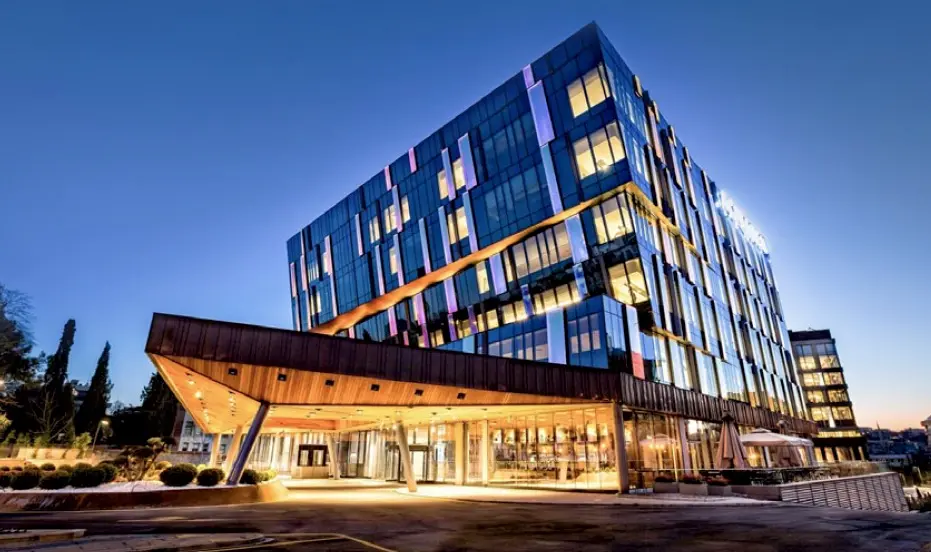A number of complications may affect children with spina bifida. But not all children get all of these complications. Many complications can be treated.
- Walking and mobility problems. The nerves that control the leg muscles don’t work properly below the area of the spinal cord that is affected. This can cause muscle weakness of the legs. Sometimes it can cause loss of movement, known as paralysis. Whether a child can walk depends on the location of the spine that’s affected and the size of the opening in the neural tube. Ability to walk also depends on the care received before and after birth.
- Orthopedic complications. Children with myelomeningocele can have several complications in the legs and spine because of weak muscles. The complications depend on the location of the spine that’s affected. Possible orthopedic issues may include:
- Curved spine, known as scoliosis.
- Changes that aren’t typical, such as an inward-facing foot, known as clubfoot.
- Dislocation of the hip.
- Bone and joint conditions.
- Shortened, tight muscles, known as muscle contractures.
- Bowel and bladder symptoms. Nerves that supply the bladder and bowel usually don’t work properly in children with myelomeningocele. As a result, they can’t control their bowel or bladder. This is because the nerves that supply the bowel and bladder come from the lowest level of the spinal cord.
- Buildup of fluid in the brain, known as hydrocephalus. Babies born with myelomeningocele commonly have a buildup of fluid in the brain.
- Chiari malformation type 2. Chiari malformation (kee-AH-ree mal-for-MAY-shun) type 2 is common in children who have myelomeningocele. The brainstem is the lowest part of the brain above the spinal cord. In Chiari malformation type 2, the brainstem becomes longer and is lower than usual in the spinal canal or area of the neck. This can cause arm weakness and trouble with breathing and swallowing. Rarely, this condition can cause compression on this area of the brain. Surgery is needed to relieve the pressure.
- Infection in the tissues surrounding the brain, known as meningitis. Some babies with myelomeningocele may develop an infection in the tissues surrounding the brain. This potentially dangerous infection may cause brain injury.
- Tethered spinal cord. A tethered spinal cord is when the spinal nerves attach to tissue and stretch. This can happen with scar tissue that resulted from surgery. When a spinal cord is tethered, it’s less able to grow as the child grows. It can lead to loss of muscle function in the legs, bowel or bladder. Surgery can limit the degree of disability.
- Sleep-disordered breathing. Sleep apnea or other sleep conditions can affect both children and adults with spina bifida, particularly those with myelomeningocele. They may need to be tested to see if they briefly stop breathing several times during sleep, known as sleep apnea. Getting treatment can improve health and quality of life.
- Skin problems. Children with spina bifida have less feeling in some parts of their bodies and may get wounds on their feet, legs, buttocks or backs. Blisters or sores can turn into deep wounds or foot infections that are hard to treat. Children with myelomeningocele have a higher risk of developing wounds in casts.
- Other complications. Other medical issues may arise as children with spina bifida get older. These complications may include urinary tract infections, gastrointestinal conditions and depression. Children with myelomeningocele may have learning disabilities. They may have trouble paying attention and learning reading and math.
Spina bifida occurs in different types: spina bifida occulta, myelomeningocele or the very rare type, meningocele.
Spina bifida occulta
Occulta means hidden. Spina bifida occulta is the mildest and most common type. This type of spina bifida results in a small separation or gap in one or more of the bones of the spine, called vertebrae. Many people who have spina bifida occulta don’t know they have it. It may be found during an imaging test such as an X-ray that is done for another reason.
Myelomeningocele
Myelomeningocele is the most serious type. It also is known as open spina bifida. The spinal canal is open along several vertebrae in the lower or middle back. Part of the spinal cord, including the spinal cord’s protective covering and spinal nerves, push through this opening at birth, forming a sac on the baby’s back. Tissues and nerves usually are exposed. This makes the baby prone to dangerous infections. This type also may cause loss of movement in the legs, and bladder and bowel dysfunction.
Meningocele
This is a rare type of spina bifida. In this type, a sac of spinal fluid bulges through an opening in the spine. No nerves are affected and the spinal cord isn’t in the fluid sac. Babies with meningocele may have some minor trouble with functioning, including with the bladder and bowels.
The cause of spina bifida is not known. It’s thought that a combination of genetic, nutritional and environmental risk factors causes the condition. This includes having a family history of neural tube defects and getting too little folate, also known as vitamin B-9, during pregnancy.
Symptoms of spina bifida vary by type and from one person to another.
- Spina bifida occulta. Typically, there aren’t any symptoms of spina bifida occulta because the spinal nerves aren’t involved. But you can sometimes see symptoms on the newborn’s skin above the small gap in the spine. You might see a tuft of hair, a small dimple or a birthmark. Sometimes, these skin marks can be symptoms of a spinal cord issue that can be found with MRI or a spinal ultrasound in a newborn.
- Meningocele. This type may affect bladder and bowel function.
- Myelomeningocele. In this most serious type of spina bifida, the spinal canal remains open along several vertebrae in the lower or middle back. The membranes and part of the spinal cord or nerves protrude at birth, forming a sac. Tissues and nerves usually are exposed, though sometimes skin covers the sac. Babies with this type of spina bifida may have trouble with bladder and bowel function. They also may experience weakness or lack of movement in the legs. Babies may have a buildup of fluid in the brain called hydrocephalus that can put pressure on brain tissue.
Tests before the birth of a baby, known as prenatal screening, can check for spina bifida and other conditions. The tests aren’t perfect. Some people who have positive blood tests have babies without spina bifida. Even if the results are negative, there’s still a small chance that spina bifida is present.
Blood tests
Spina bifida can be screened with blood tests during pregnancy, but typically the diagnosis is made with an ultrasound exam.
- Maternal serum alpha-fetoprotein (MSAFP) test. For the MSAFP test, a sample of blood is drawn and tested for alpha-fetoprotein (AFP). This is a protein produced by the baby. It’s typical for a small amount of AFP to cross the placenta and enter the pregnant parent’s bloodstream. But high levels of AFP suggest that the baby may have a neural tube defect such as spina bifida. However, high levels of AFP don’t always occur in spina bifida.
- Test to confirm high AFP levels. Varying levels of AFP can be caused by other factors such as a wrong estimate of the unborn baby’s age or the presence of multiple babies. You may need a follow-up blood test to confirm the results. If levels of AFP are still high, you need further evaluation, including an ultrasound exam.
- Other blood tests. Your healthcare professional may perform the MSAFP test with two or three other blood tests. These tests screen for other conditions, such as trisomy 21 syndrome, also known as Down syndrome. They are commonly done with the MSAFP test.
Ultrasound
An ultrasound is the most accurate way to diagnose spina bifida in your baby before delivery. During pregnancy, an ultrasound may be done in the first 11 to 14 weeks of pregnancy, known as the first trimester. Or it may be done at 18 to 22 weeks, known as the second trimester. Spina bifida can be more accurately diagnosed during the second trimester ultrasound exam. This exam is crucial to identify and rule out conditions that may be present at birth.
An advanced ultrasound can detect symptoms of spina bifida, such as an open spine or features in the baby’s brain. The ultrasound can also help doctors to see how serious the spina bifida is.
Amniocentesis
If the prenatal ultrasound confirms the diagnosis of spina bifida, your healthcare professional may request a test called amniocentesis. During this test, a needle is used to remove a sample of fluid from the amniotic sac that surrounds the baby. This exam may be important to rule out genetic diseases.





















